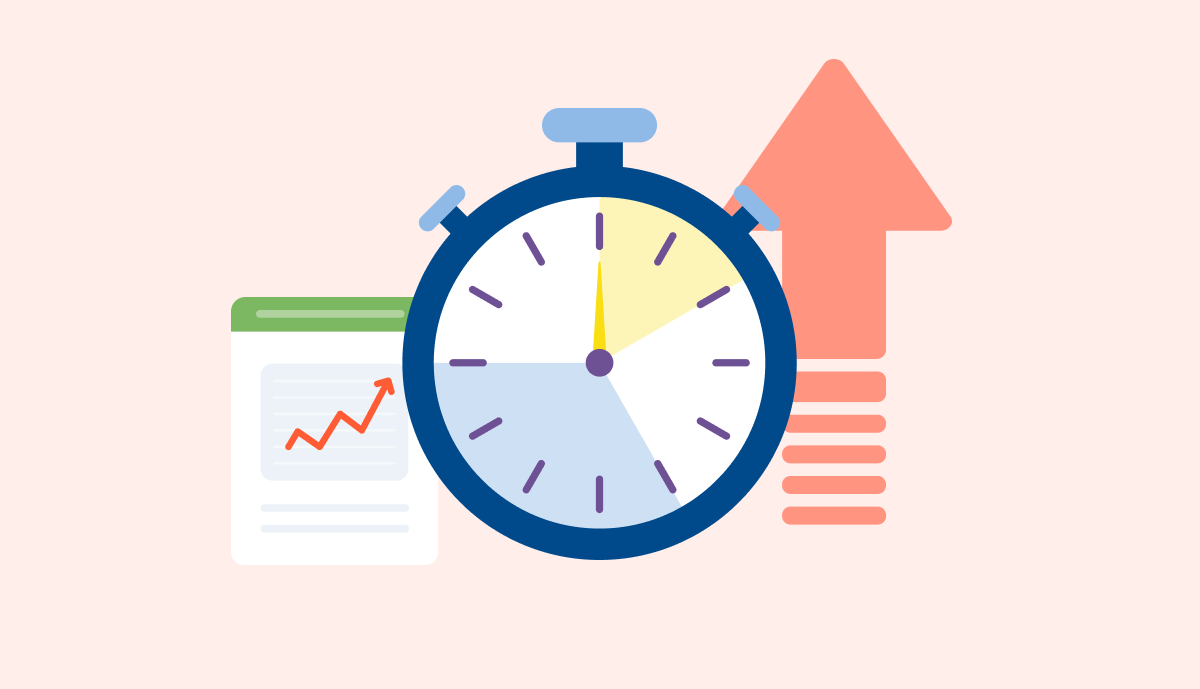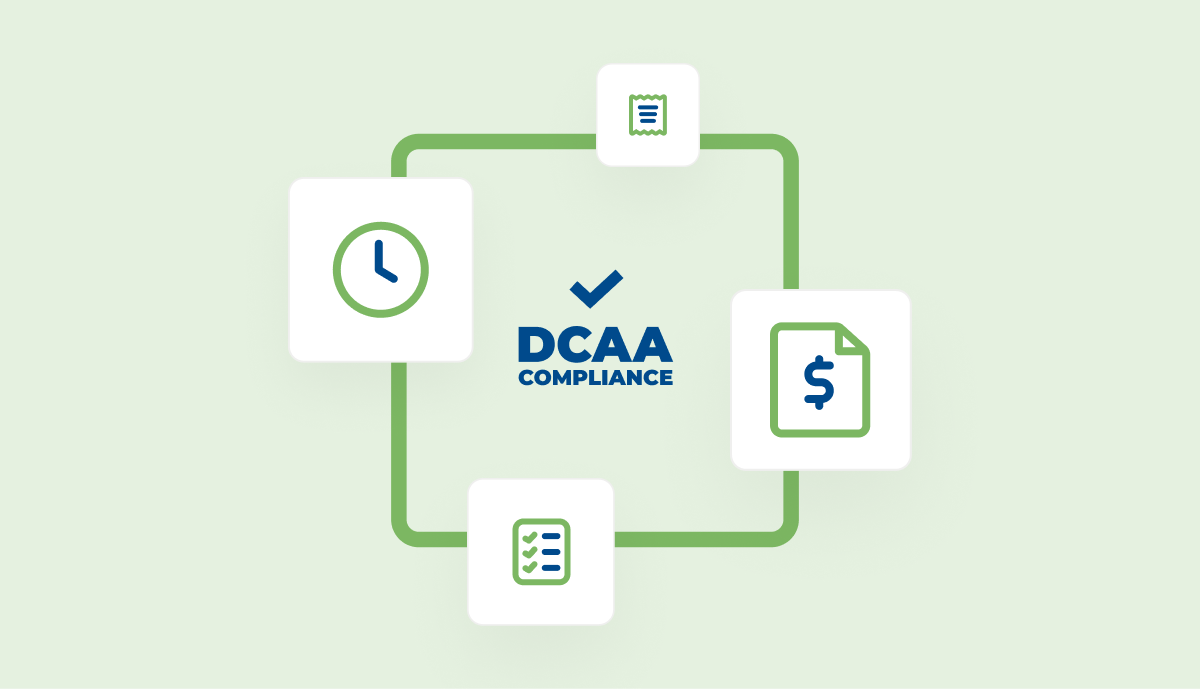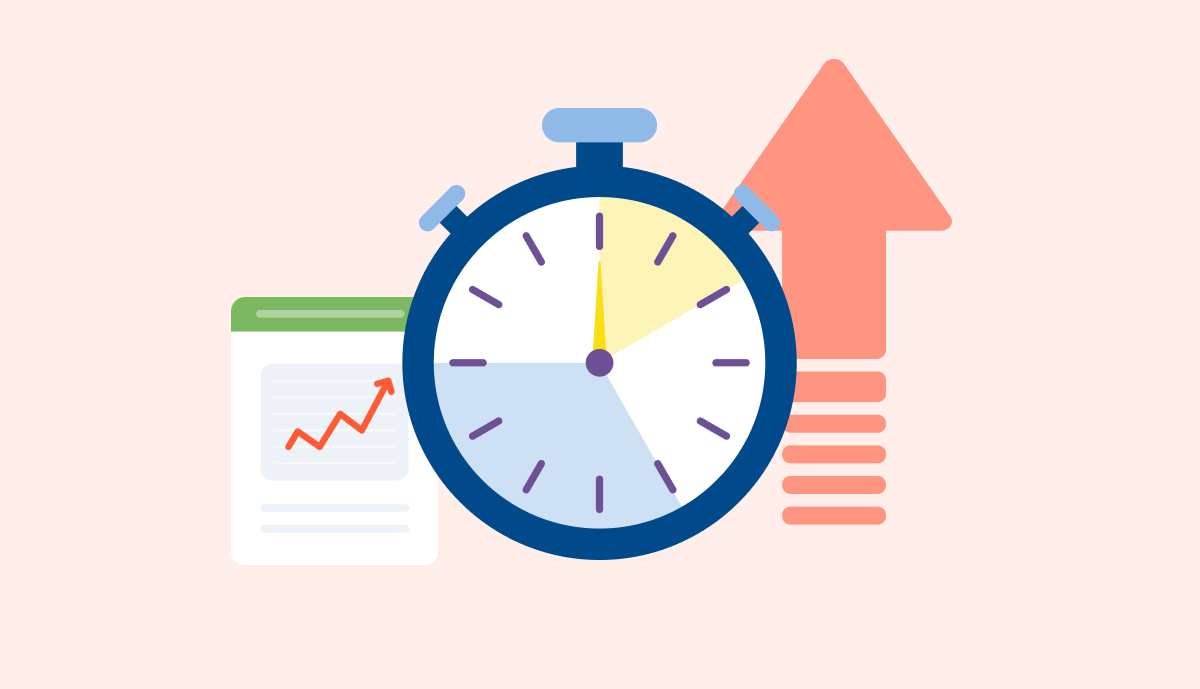
Last updated July 5th, 2023
Understanding utilization rates and how they work can help professional services organizations of all industries and sizes optimize their resources and improve their bottom line. In this post, we’ll explore the basics of utilization rates and why they matter.
What is a Utilization Rate?
Utilization rates are a crucial metric for all professional services organizations. The rate is a calculation of the amount of time that a resource, such as staff, is being used compared to the total amount of time that it is available to the organization.
Utilization rates refer to the overall utilization of resources within the organization, including all employees or consultants as a whole.
The utilization rate provides insights into how effectively an organization is utilizing its workforce collectively to deliver billable work and whether there is room for improvement. It’s also used to identify potential bottlenecks, underutilized resources, or overbooked staff.
A higher utilization rate generally indicates better productivity and good resource management in the organization.
Utilization Rate Formula
The utilization rate formula is simple: divide the total amount of time that a resource is being billed by the total amount of time that it is available, and then multiply by 100 to get a percentage.

Billable Hours
The total number of hours worked by employees/consultants on client projects or tasks that can be directly billed to clients.
Available Hours
The total number of hours that employees/consultants are available to work during the specified period. This usually excludes vacation time, holidays, training, and other non-working hours.
Utilization Rate Example
For example, let’s say a company, “ABC Consulting” has 20 employees. Here’s how you can calculate the utilization rate for the entire organization.
Billable hours: Collect the total billable hours worked by all 20 employees in the organization during a specific period (we’ll use a month in this example). Let’s say the total billable hours for ABC Consulting in that month were 3,200 hours.
Available hours: Calculate the total available hours for all employees combined during that same 1-month period. Assuming each employee had a standard working schedule of 8 hours per day and worked for 20 days in that month, the total available hours would be:
Total available hours = (Number of Employees) x (Hours per Day) x (Number of Working Days)
Total available hours = 20 employees x 8 hours/day x 20 days
Total available hours = 3,200 hours
Utilization Rate Calculation
Using the formula mentioned earlier, you can calculate the utilization rate for the organization:
Utilization rate = (Billable Hours / Available Hours) x 100
Utilization rate = (3,200 hours / 3,200 hours) x 100
Utilization rate = 100%
In this example, ABC Consulting’s utilization rate is 100%, indicating that the organization’s employees effectively utilized all their available working hours by working on billable projects.
Employee Utilization Rate
While calculated the same way as utilization rates, employee utilization rates focus specifically on the productivity and efficiency of individual employees rather than the organization as a whole.
Employee utilization rate is calculated by dividing the total number of billable hours worked by an employee during a specific period by their available hours, and then multiplying by 100 to get a percentage.
It measures how effectively an employee is utilizing their working hours to generate billable work for the organization. This metric is useful for assessing the performance of individual employees, identifying high performers, and understanding their contribution to the organization’s overall productivity.

What is a Good Utilization Rate?
A good utilization rate for a professional services organization can vary depending on the industry, the type of services provided, and the organization’s business model.
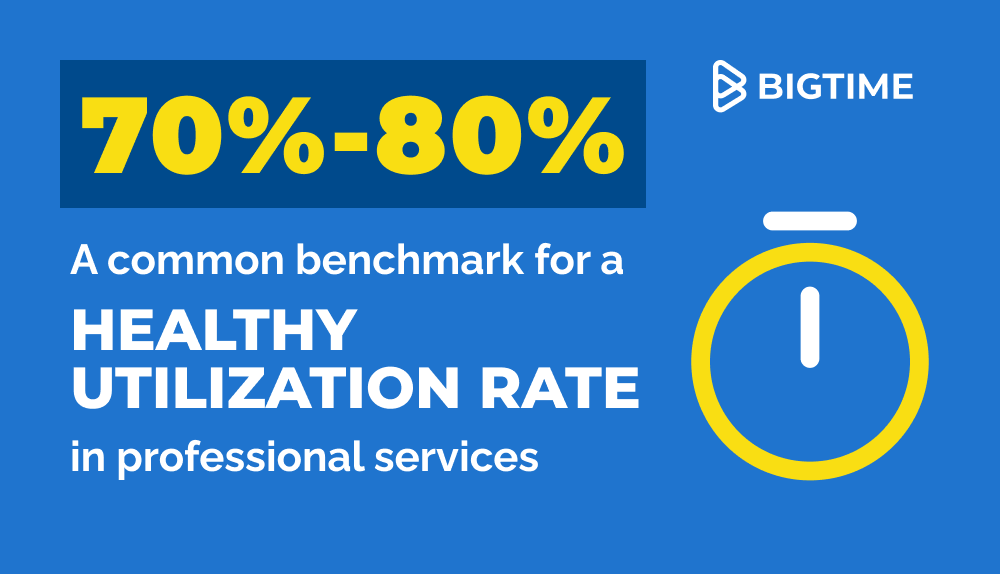
While aiming for a high utilization rate can be beneficial, it’s crucial to consider employees’ work-life balance and the quality of work delivered. Excessively high utilization rates can lead to employee burnout, reduced job satisfaction, and potential impacts on client satisfaction and project quality
On the other hand, a low utilization rate may indicate that a business is overstaffed or that its employees are not being utilized effectively.
Organizations should find a balance that maximizes productivity and profitability while considering the well-being and long-term sustainability of their employees and the business as a whole.
Here are a few factors to consider when determining what’s a good utilization rate for your business:
Industry standards: It’s important to understand the typical utilization rates within your industry. Different sectors, such as management consulting, IT services, or legal services, may have different utilization rate benchmarks due to different project durations, client demands, and service delivery models.
Business model & profitability: Organizations with a higher amount of fixed-cost services may aim for higher utilization rates to maximize their revenue and profitability. On the other hand, organizations that prioritize work-life balance or have more project-based pricing models may target slightly lower utilization rates.
Resource availability: The capacity and availability of resources play a role in determining utilization targets. If an organization has a surplus of skilled resources, it might strive for higher utilization rates to optimize resource allocation. On the other hand, organizations with limited resources or specialized skill sets may have lower utilization targets to ensure quality and avoid burnout.
The complexity of projects: The nature and complexity of projects can influence utilization rates. Highly complex projects may require more research, planning, and collaboration time, resulting in lower utilization rates. However, simpler or repetitive tasks may allow for higher utilization rates.
Why Utilization Rates Matter
Utilization rates matter in a professional services firm for many reasons:
Resource Optimization
By tracking and analyzing utilization rates, organizations can ensure that their employees’ skills and expertise are effectively utilized. It allows businesses to identify underutilized resources and make informed decisions about resource allocation, staffing, and project assignments.
Revenue Generation
Higher utilization rates indicate that employees are spending more of their working hours on billable work, leading to increased revenue and profitability. By optimizing utilization rates, businesses can maximize their revenue potential and improve financial performance.
Performance Evaluation
Utilization rates serve as a key performance indicator for individual employees. It provides insights into their productivity, efficiency, and contribution to the organization. By monitoring utilization rates, organizations can evaluate employee performance, identify high performers, and address any performance issues or training needs.

Project Planning and Delivery
Utilization rates help businesses estimate resource requirements, ensure adequate staffing for projects, and manage workloads effectively. By maintaining optimal utilization rates, organizations can meet client expectations, deliver projects on time, and improve client satisfaction.
Capacity Planning
By analyzing historical utilization data and forecasting future demand, organizations can assess their resource needs, identify potential resource gaps, and plan for training, or outsourcing to meet future client demands.
Operational Efficiency
Monitoring and optimizing utilization rates contribute to overall operational efficiency. By maximizing the utilization of resources, organizations can minimize non-billable hours and reduce idle time. This leads to improved efficiency, reduced costs, and better utilization of available resources.
Strategic Decision Making
By analyzing utilization trends and patterns, businesses can identify opportunities for growth, assess the need for change, and make informed decisions about resource allocation.
Increase Utilization Rates with PSA Software
Professional Services Automation (PSA) software like BigTime can help increase utilization rates by providing resource visibility and allocation, enabling efficient project planning and scheduling, simplifying time and expense tracking, offering real-time reporting and analytics, streamlining workflow and collaboration, and supporting capacity planning and forecasting.
By leveraging these features, firms can optimize resource utilization, improve operational efficiency, and enhance profitability.
In the Professional Services Automation Software Benchmark Report that surveyed 400+ professional services businesses, the following was revealed for organizations who are using PSA software.
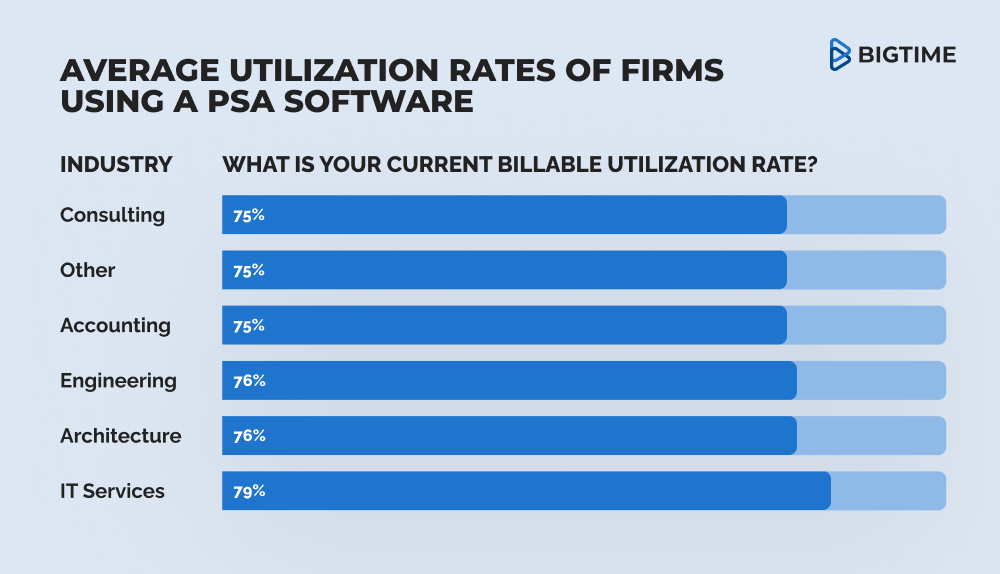

Frequently Asked Questions About Utilization Rates
What is a good utilization rate?
A good utilization rate can vary depending on the specific industry, but generally, a utilization rate of around 70%-80% is considered healthy.
How do you define utilization?
Utilization is the measure of how efficiently and effectively a resource is utilized to optimize productivity and minimize inefficiencies.
Why is utilization rate important?
Utilization rates are important because they provide insights into how effectively resources are being utilized, enabling businesses to optimize their operations, identify inefficiencies, improve productivity, make informed decisions regarding resource allocation, and ultimately enhance overall performance and profitability.
What are bad utilization rates?
While it may vary depending on the industry, utilization rates below 50% are considered poor, indicating wasted capacity, lower productivity, and potential financial inefficiencies.
What’s the difference between billability and utilization rates?
The difference between billability and utilization rates is that billability measures the portion of time spent on billable client work, while utilization measures the overall productive use of available resources, including both billable and non-billable activities.
What is the average utilization rate for consultants?
The average utilization rate for consultants is commonly expected to range from 60% to 80%, with some top-performing consultants achieving rates above 80%.


